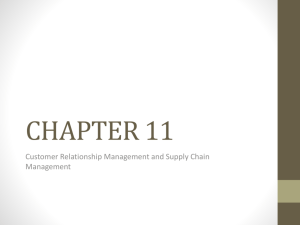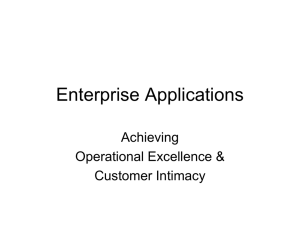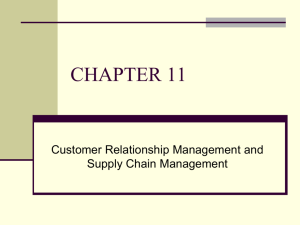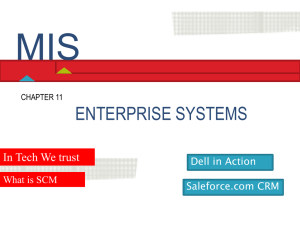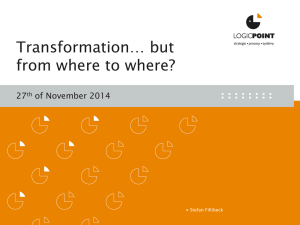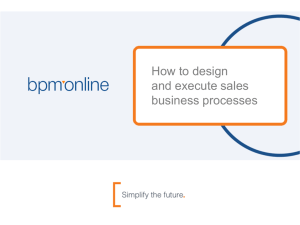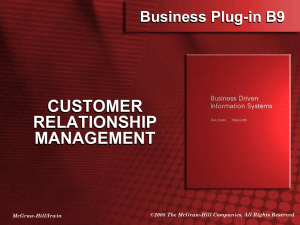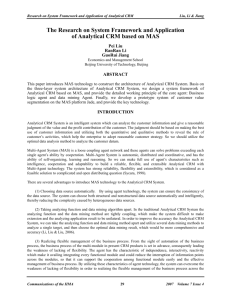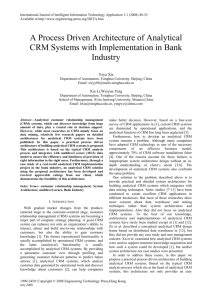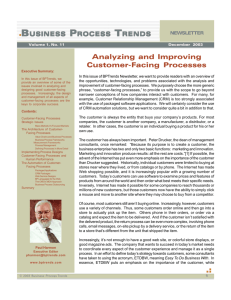Analytical CRM - University of San Diego Home Pages
advertisement
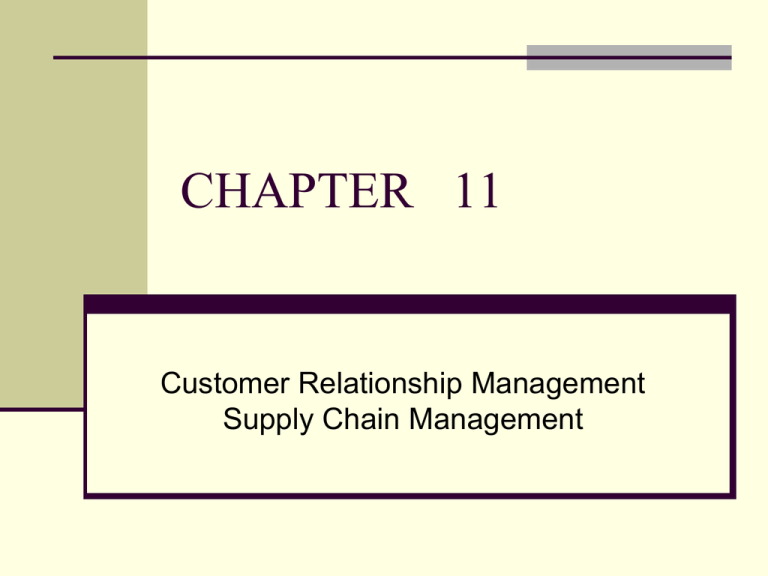
CHAPTER 11 Customer Relationship Management Supply Chain Management Customer Relationship Strategy Customer Relationship Systems Customer Intimacy? You Your competition Your customer Customer Relationship Management CRM systems brings back the personal touch of “back in the day” where small stores had loyal customers One of the goals is for big business to act small again. The Need for CRM It costs six times more to sell to a new customer than to sell to an existing one. By increasing the customer retention rate by 5%, profits could increase by 85%. The Goal of an CRM System “Treat different customers differently.” Keep profitable customers and maximize lifetime revenue from them. CRM Process CRM Strategy to Systems All successful CRM’s share two basic elements Identify customer touch pts. Consolidate data about each customer Customer Touch Points Data Consolidation Sales Customer Service Marketing Customer Data Consolidation = 360-Degree View of Customers 2 types of CRM applications Operational – Customer Facing applications Customer Touching applications Analytical Data Mining Decision Support Business Intelligence Customer-Facing Applications Customer service and support refers to systems that automate requests, complaints, product returns, and requests for information. Sales force automation automatically records all the aspects in a sales transaction process. Campaign management help organizations plan campaigns so that the right messages are sent to the right people through the right channels. Customer-Touching Applications Search and comparison capabilities Technical and other information and services Customized products and services Loyalty programs 9.3 Analytical CRM Analytical CRM systems analyze customer behavior and perceptions in order to provide actionable business intelligence. The Relationship Between Operational CRM and Analytical CRM Customer-facing Applications • • • • Sales Marketing Customer Service Campaign Management Customer Data Warehouse • Data Mining • Business Intelligence The Relationship Between Operational CRM and Analytical CRM Customer-touching Applications • • • • • Search and Comparison Customized Products FAQ E-mail / Auto Response Loyalty Programs Customer Data Warehouse • Data Mining • Business Intelligence Analytical CRM Design and execute targeted marketing campaigns Increase customer acquisition, cross selling and upselling Analytical CRM Provide guidelines for future product development Provide financial forecasting and customer profitability analysis 11.6 Supply Chain Management Supply chain management (SCM) is the function of planning, organizing and optimizing the supply chain’s activities. Interorganizational information system (IOS) involves information flows among two or more organizations. The Flows of the Supply Chain Material flows Information flows © Toh Kheng Ho/Age Fotostock America, Inc. Financial flows Supply Chain Management …refers to the flow of materials, information, money from: Raw material suppliers Warehouses Factories End consumers. SCM Upstream component of a supply chain: sourcing or procurement takes place. Internal component of a supply chain: packaging, assembly, or manufacturing takes place. Downstream component of a supply chain: distribution takes place. Generic Supply Chain Problems Along the Supply Chain Poor customer service Poor quality product High inventory costs Loss of revenues Solutions to Supply Chain Problems Using inventories Just-in-time inventory a system in which a supplier delivers the precise number of parts to be assembled into a finished product at precisely the right time. Information sharing Vendor-managed inventory-an inventory strategy where the supplier monitors a vendor’s inventory for a product and replenishes products when needed. Solutions to Supply Chain Problems Portals Procurement- purchasing products between a single buyer and multiple suppliers. Boeing has deployed a portal which it conducts business with its suppliers Distribution – selling from a single supplier to multiple buyers. Dell services its business customers through its distribution portal 11.7 Information Technology Support for Supply Chain Management Electronic data interchange (EDI) is a communication standard that enables business partners to exchange routine documents, such as purchase orders, electronically. EDI Benefits Benefits Minimize data entry errors Increases productivity Limitations Significant initial investment to implement Traditional EDI system is inflexible Multiple EDI standards exist EDI Limitations
